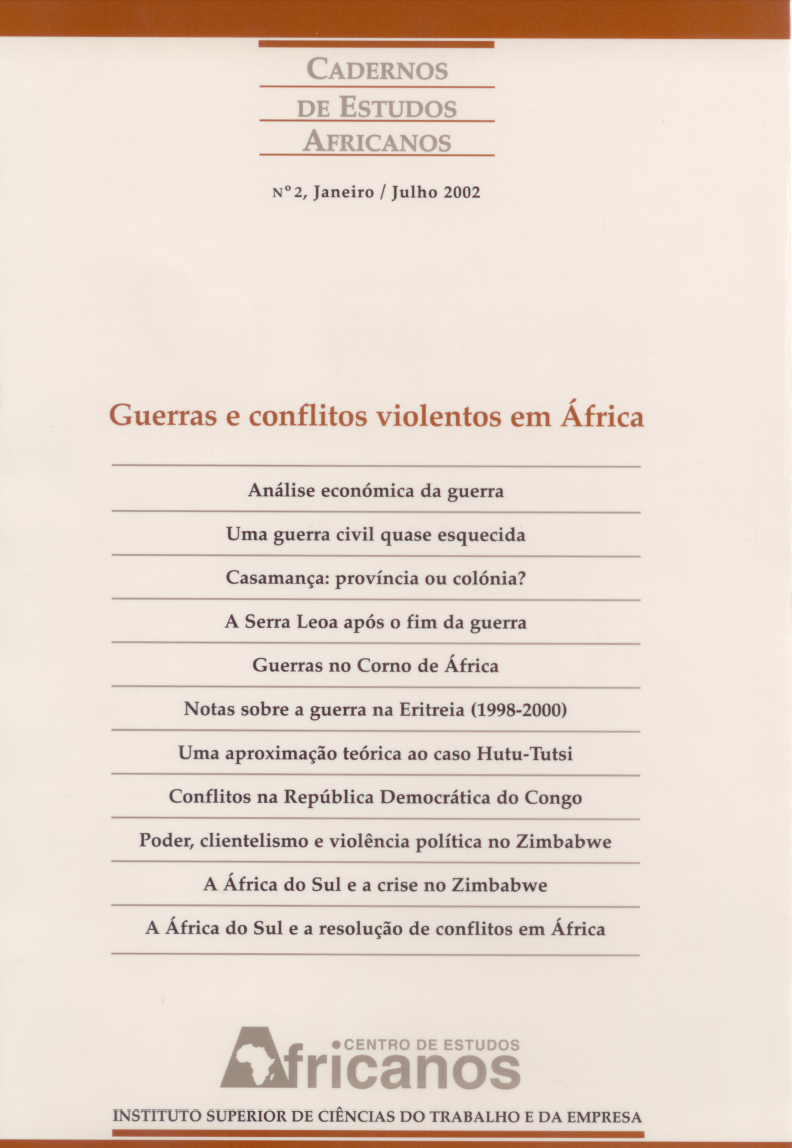Wars in the Horn of Africa and the dismantling of the Somali State
DOI:
https://doi.org/10.4000/cea.1280Keywords:
conflito, formação do estado, SomáliaAbstract
Somalia was an artificial colonial construct and had no depth of state formation. Although supposedly homogenous, its clan families operate as independent entities and the reality of any Somali commitment to a single state must be questioned. Under the stresses of military defeat against Ethiopia, and a failed socialist revolution, and the resurrection of «clanism», it fell apart in the late 1980s. Subsequent international efforts to rebuild the state of Somalia have failed because the international community has ignored the realities of Somalia clan politics. The only area to succeed in restoring political structures is Somaliland, basing itself upon one particular clan family; its attempts have rejected internationally, despite having provided a clear, and successful, model for the rest of Somalia.
References
A. ABBAY, 1998, Identity Jilted or Re-imagining Identity: the Divergent Paths of the Eritrean and Tigrean Nationalist Struggles, N. J., Red Sea Press.
A. M. lSSA-SALWE, 1994, The Collapse of the Somali State, London, Haan.
A. TIRUNEH, 1993, The Ethiopian Revolution 1974-1987, Cambridge University Press.
B. ZEWDE, 1991, A History of Modern Ethiopia, 1855-1974, Ohio, Ohio University press.
C. CLAPHAM, 1990, Transformation and Continuity in Revolutionary Ethiopia, Cambridge University Press.
D. CONNELL, 1997, Against All Odds: A Chronicle of the Eritrean Revolution, N. J., Red Sea Press.
D. DONHAM,1986, «Old Abyssinia and the New Ethiopian Empire: Themes in Social History», in Donham and James (ed), The Southern Marches of Ethiopia, Cambridge University Press.
D. POOL, 1983, «Eritrean Nationalism», in I. M. Lewis (ed), Nationalism and Self-Determination in the Horn of Africa, London, Ithaca Press.
I. M. LEWIS et al., 1995, A Study of Decentralised Political Structures for Somalia: A Menu of Options, London, LSE.
I. M. LEWIS, 1993, Blood and Bone: The Call of Kinship in Somali Society, New Jersey.
J. McCANN, 1987, From Poverty to Famine in North East Ethiopia: A Rural History 1900-1935, Philadelphia, University of Pennsylvania.
J. SORENSON, 1993, Imagining Ethiopia: Struggles for History and Identity in the Horn of Africa, N. J., Rutgers University Press.
J. YOUNG, 1997, Peasant Revolution in Ethiopia: the Tigray Peoples Liberation Front, 1975-1991, Cambridge University Press.
J. YOUNG, 1998, «Regionalism and Democracy in Ethiopia», Third World Quarterly,19.
DOI : 10.1080/01436599814415
L. V. CASSENELLI, 1982, The Shaping of Somali Society, Philadelphia, University of Pennsylvania.
M. PLAUT & P. S. GILKES, 1999, Conflict in the Horn: Why Eritrea and Ethiopia are at War, London, Royal Institute of International Affairs.
MOHAMED HASSAN, The Oromo of Ethiopia, Cambridge University Press, 1990
MOHAMED OSMAN OMAR, The Road to Zero: Somalia's Self-Destruction, Haan, London 1992
P. BAXTER, 1983, «The Problem of the Oromo or the Problem for the Oromo?», in I. M. Lewis (ed), Nationalism and Self-Determination in the Horn of Africa, London, Ithaca Press.
R. IYOB, 1995, The Eritrean Struggle for Independence: Domination, Resistance, Nationalism 1941-1993, Cambridge University press.
S. S. SAMATAR & D. D. LAITAN, 1987, Somalia: Nation in Search of a State, Colorado, Westview Press.
T. NEGASH, 1987, Italian Colonialism in Eritrea, 1882-1941, Sweden, Uppsala.
THE UNITED NATIONS AND SOMALIA 1992-1996, 1996, UN Blue Book Series, vol. VIII, New York.
Downloads
Published
Issue
Section
License
Copyright (c) 2016 Cadernos de Estudos Africanos

This work is licensed under a Creative Commons Attribution-NonCommercial-ShareAlike 4.0 International License.
I authorize the publication of the submitted article/review of which I am the author.
I also declare that this article is original, that it has not been published in any other way, and that I exclusively assign the publication rights to the journal Cadernos de Estudos Africanos. Reproduction of the article, in whole or in part, in other publications or on other media is subject to the prior authorization of the publisher Centro de Estudos Internacionais do Iscte - Instituto Universitário de Lisboa.


